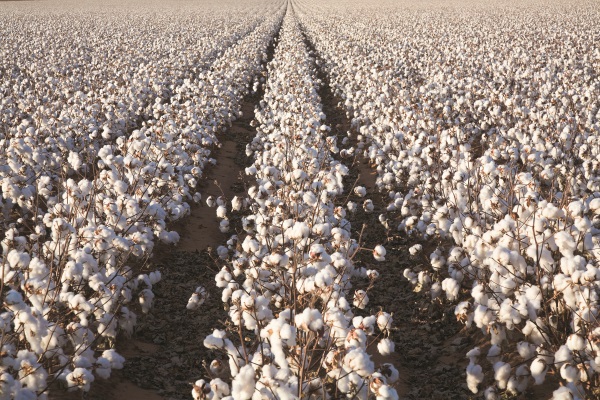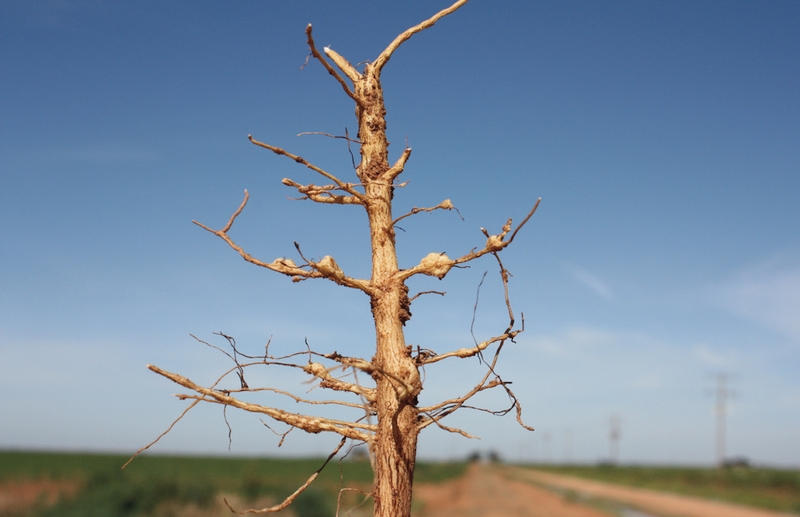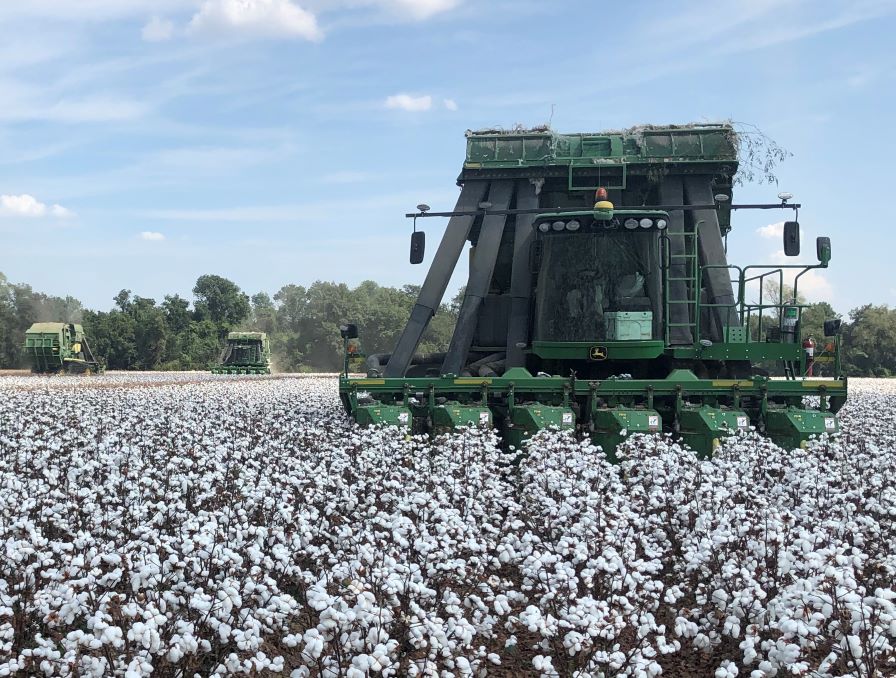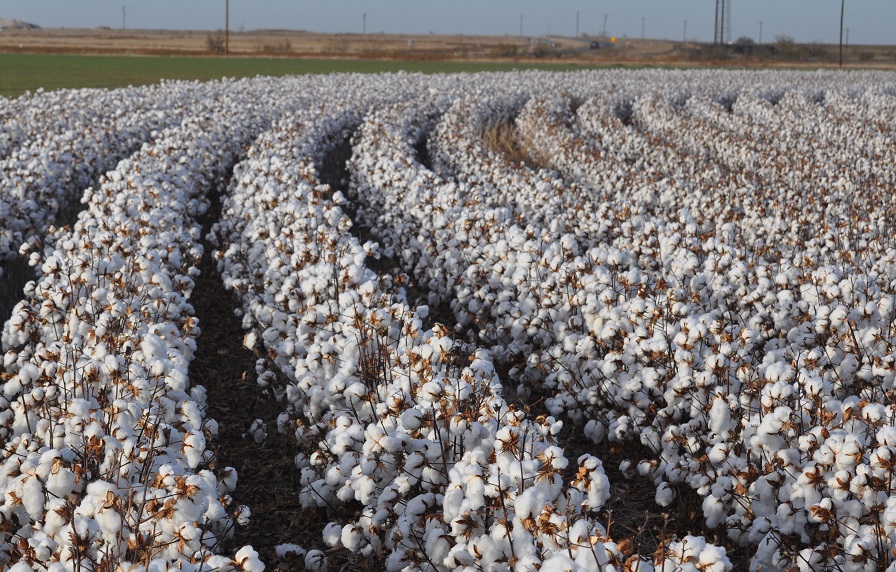Crop Scan Ag Report: Defoliation on the Horizon
Defoliation is starting or getting ready to start on early planted cotton in areas across the Southeast, Mid-South, and Texas. For the most part, however, much of the crop is still weeks away from being ready to defoliate and pick. Some areas of southwest Georgia are still battling plant bugs and whiteflies, with stink bugs still showing up in parts of central Texas. Right now, the crop is what the crop will be. Growers are just looking for Mother Nature to provide some good harvest weather.
Here’s what our contributing consultants had to report for early September.
Chad Harrell owns and operates Harrell Agronomic Services in Northeastern North Carolina.
Our cotton has changed a lot since the last update. All of the cotton has now cut out and is safe from insects, except for a very few late planted fields. We are right on schedule in terms of maturity.
Most of our cotton is now 8-10 NACB and will be ready to defoliate in a couple of weeks. We may have to wait a while for some of our cotton that dropped fruit in the droughty areas and then grew aggressively in July and set a late top crop. Our cotton cut out hard and fast this year due to the leaching rains while still holding on to some top bolls, so I don’t think that we will see a lot of regrowth.
We have seen some boll rot in fields that had a denser canopy, but this seems to be improving now that we have lower humidity and leaves dropping. Overall, we have good potential. There will be some strong 3-bale cotton this year but also a lot of just average yields in the areas that received rain a little late.
Wes Briggs consults on cotton, corn, peanuts, soybeans, and small grains for growers in Georgia, Alabama, and Florida.
We have not defoliated any cotton, but we’re probably two weeks away from starting on our earliest cotton. We have cotton anywhere from two weeks away from cracked bolls to cotton that’s in its third week of open bolls. We’re generally go 4 to 5 weeks of open bolls before we start defoliating in this part of Georgia.
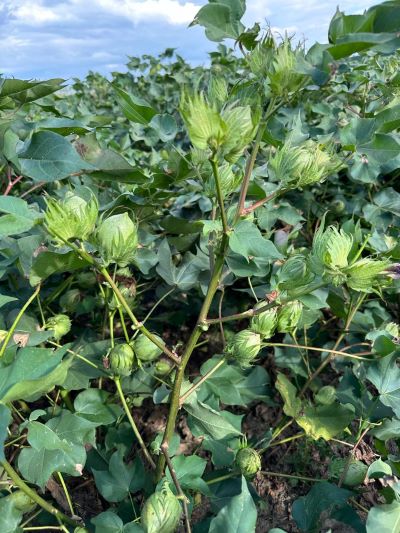 Photo: Wes Briggs
Photo: Wes Briggs
Our irrigated cotton is pretty much made. It’s not a bad crop. We have had some issues from areolate mildew late and from some horrendous, Mississippi Delta type plant bug pressure. In fact, our two top pests right now are plant bugs and whiteflies. We’re going to have to continue to treat our cotton that’s less than 100 days old.
We’ve always been able to treat and kill plant bugs, but this year we didn’t do a very good job where we had really heavy pockets of plant bugs. It took several back-to-back sprays to get them under control, and if you missed it or waited or delayed, we saw some pretty bad damage in those areas of heavy pressure. We had to increase some rates and close down some intervals in some of those areas. Of course, it was not that way in all areas of the state.
We have treated a fair amount of acres for whiteflies. Weather temperatures are supposed to cool off, but it’s not going to be enough to kill off whiteflies. And it’s been the lightest stink bug year I’ve ever seen in cotton in my area.
It’s been an expensive year all around. Growers have a lot of money invested in this crop. We need Mother Nature to cooperate with us and keep tropical storms at bay so we can get this crop out. We have a pretty decent crop and just need a couple of weeks of good harvest conditions.
Tucker Miller is a Mississippi-based independent private consultant for cotton, soybeans, corn, peanuts, rice, and vegetables.
We have started to defoliate some of the early planted cotton. It still looks like we’re about a week or so away from really getting started on most of the defoliation. We have a good bit scheduled for the end of this week when rain chances are lower. Our first shot will be Dropp and Prep followed by Prep and ET five or six days later.
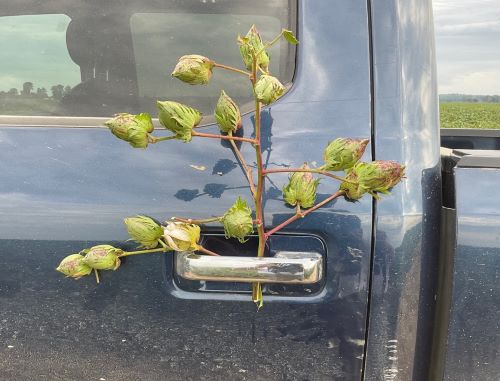 Photo: Tucker Miller
Photo: Tucker Miller
It still looks like a good crop if we don’t get any more rain. We got past any boll rot, but rain showers last week caused some hard lock issues on the early cotton that was opening. We’re hoping it doesn’t rain again until after harvest. Our biggest concern is trying to come out and break even with the low prices and high cost of production .
Hoping everyone has a good harvest and can go again next year.
Mark Nemec is an independent agricultural consultant for cotton, wheat, grain sorghum and corn in the Blacklands and Brazos River Bottom area of Central Texas.
The end is near. Harvest of some dryland fields has begun. Defoliation starts on the early planted cotton fields. So far we have missed any big rain in Central Texas. There have been a lot of little showers around causing some application delays.
There are still a few fields of young, late planted cotton that still needs checking. Stink bugs are trying to take some of the top bolls. Everything else has matured, and they are congregating on the lush green stuff.
We are trying to push this crop to the finish line as soon as we can.
Kerry Siders is Texas A&M AgriLife Extension Agent-IPM for Hockley, Cochran, and Lamb Counties.
The South Plains of Texas cotton crop growing season is coming to an end. Fortunately, good rain was received during the Labor Day weekend which made turning water off possible.
I think this rain provides the answer to our annual question of “When do we turn the water off and leave it off?.” Most areas received an average of 1.5” of rain. Currently, cotton is using an average of 0.12” per day. So, 1.5” of rain plus what irrigation water was present in the soil should give us 12-15 days of good moisture.
This moisture should get us down the road to near September 17-20. Plus, odds of additional rain are good this time of year. By that time, the youngest harvestable bolls should be well over 30 days old and can take moderate stress from heat as long as they can recover overnight.
I think we can leave most water off with few exceptions. In fact, coming off this recent heat stress in August, the cotton plant could respond to this weather by taking off growing vegetatively and causing real problems with maturing out the crop that we have set.





